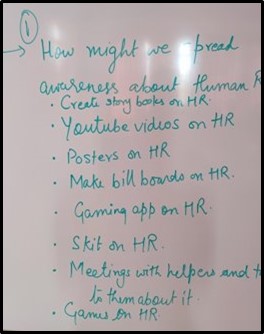Indus International School

Bangalore, India
They have used the Design Thinking Process to help take individual and collective action to bring about a difference in people’s lives, thus thinking globally and acting locally. We have seen it bring about desirable action in the form of participation, advocacy, social justice, social entrepreneurship or life choices, depending on the Central Idea. It gave them direction through the stages and at the same time gave them the agency to deviate from the plan in times of doubt and uncertainty as well. The process we followed involved following the 5 nonlinear stages which was incorporated within the Kath Murdoch Inquiry cycle. I have tried to describe it below in connection with an example of a Grade 3 Central Idea based on the theme, How We Organize ourselves – ‘Individual and group actions make a difference to how societies uphold human rights.’ Empathise – This stage is very ‘human centred’ and helped students empathize with stakeholders and understand their view point. In this case they interviewed the students and teachers of the Indus Community School to understand the various challenges they faced to receive their basic right to education. They also used various inquiry-based strategies to understand the concepts and related concepts en route. Empathizing helped our students to become situationally aware and apply themselves in real life situations. It helped them build skills and realize perspectives about the issue they were inquiring about.
Applying the Design Thinking Process helps students to follow a non linear process to delve deeper into the Unit of Inquiry and encourages collective as well as personal Action in the process. This process has become a way of life at Indus. It has helped students apply what they learn in real life and it has helped students to be able to think critically and creatively. They have become proactive citizens not only by using their research skills but also finding problems and attempting to solve problems. It is important that education today completes this cycle of constructing, transferring and applying meaning.

